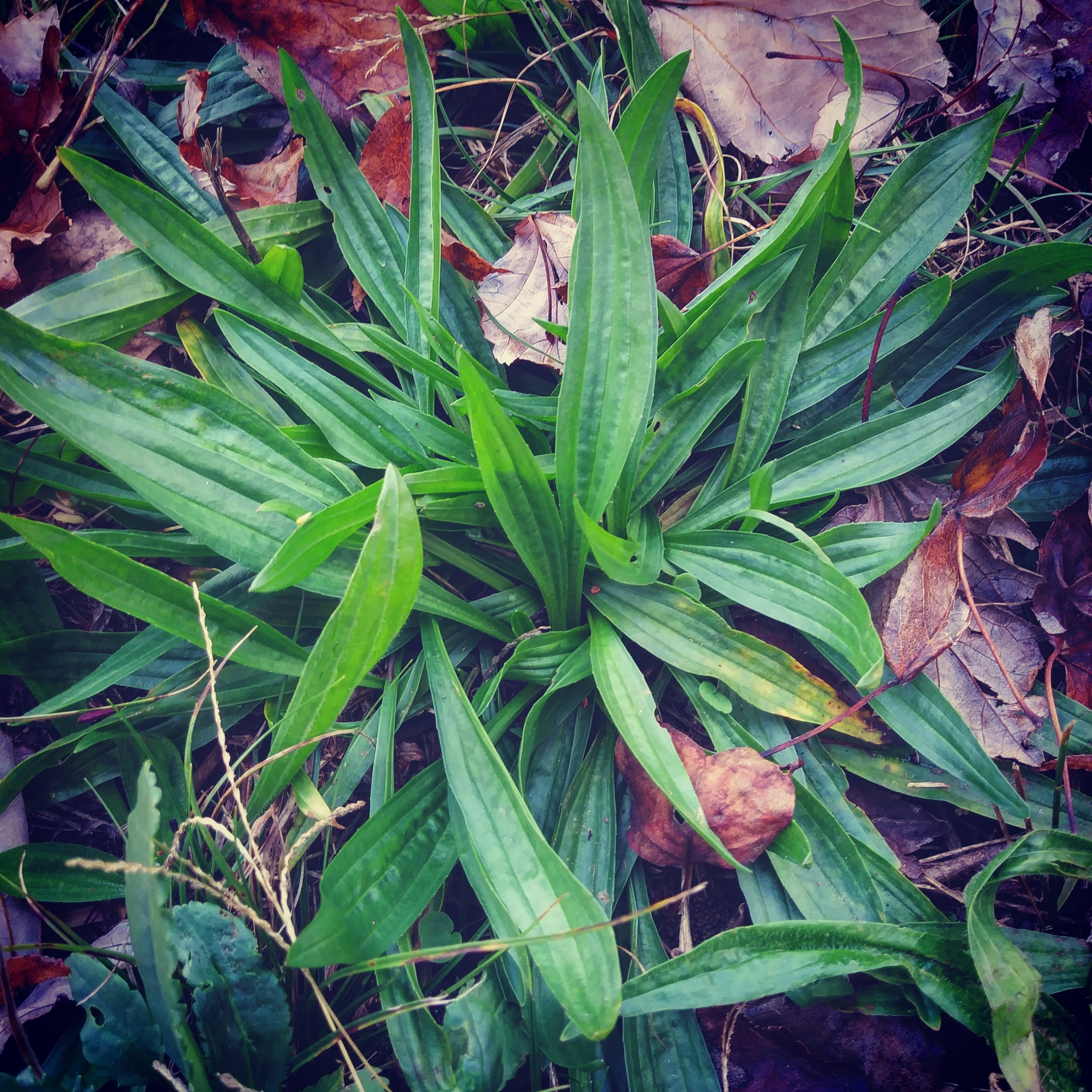Today’s plant for #WildEdibleWednesday is Plantago lanceolata, or Narrowleaf Plantain. It also goes by ribwort plantain, English plantain, ribleaf, or lamb’s tongue. If you’ve ever taken one of our courses at SARCRAFT, there’s a 100% chance we’ve at least mentioned Plantain, if not shown you how to use it. We’ve always said that if you’re going to learn one edible and medicinal plant, it should be plantain. While its first cousin Broadleaf Plantain (Plantago major) is slightly more effective medicinally and superior if you can find it, Narrowleaf Plantain is still an incredibly useful and powerful medicinal plant.
Narrowleaf plantain is native to Northern Europe, particularly the British Isles. However, it has become widely naturalized in temperate regions throughout the world, and is considered a pernicious weed in the Americas, Australia, New Zealand, and much of Asia. It is common in any open, sunny area – from woodland clearings, to pastures and fields, to abandoned homestead sites, to roadsides, suburban yards, and cracks in city sidewalks. Chances are, you’ve got enough in your yard to make a salad for your whole family. It is a rosette-forming perennial herb, with narrow, ribbed, lanceolate leaves that are anywhere from 4”-12” inches long. It flowers through spring, summer, and fall, displaying 6”-12” tall stalks topped with tiny white flowers. It is a prime honey plant – bees of all species absolutely love it. It has no deadly mimics.
Plantain is very edible, but where it really shines is as a medicinal plant. It has antiseptic, coagulant, expectorant, anti-inflammatory, and nephrotic properties, and its entire range of medicinal uses are too many to list here. It has a near-miraculous ability to stop bleeding, and heal small cuts, scrapes, burns, and stings. We generally keep a bowl of water full of plantain leaves on hand during our classes – if you nick yourself with a knife or burn yourself starting a fire, just go over to the bowl and wash your hands. Chances are it’ll take care of your problem. To get the most out of plantain’s antiseptic and coagulant properties, make a spit poultice: Simply take a few leaves, chew them into a pulp in your mouth, spit the wad of chewed leaves out, and slap it on your wound. At this point you can either hold it in place for ten minutes or so, or wrap a bandage around it so you can go about your business. A tea made from plantain leaves is a powerful treatment for any respiratory issue, be it a chest cold, bronchitis, asthma, or pneumonia. It works as a bronchodilator to ease breathing, helps reduce irritation to relieve coughing, and works as an expectorant to clear out mucus. Eating the seeds is also shown to reduce bad cholesterol levels.
Although not necessarily a medicinal purpose, plantain’s antiseptic properties make it a great plant for cleaning while in the woods. Washing your hands in plantain water and scrubbing your knife blade and cutting board with a crushed plantain leaf before cooking will sanitize those surfaces and kill bacteria that can make you sick. If you’ve left your pot scrubber at home, a plantain leaf will work just fine in a pinch. The large ribs of the mature leaves do a great job of removing food residue from your dishes, and the natural antiseptic will prevent future bacterial growth.
While we use it primarily for its medicinal properties, plantain is also a great edible. Leaves can get tough and fibrous when they mature, so harvest them young. They are high in vitamin C, as well as a whole host of trace minerals. They make a great supplemental food source in a survival situation, as well as a pretty good salad green at home. They can be used in place of spinach in stir fry, soups, or cooked as a green. One benefit of plantain is that it’s one of the hardiest plants in the Eastern Woodlands – it’s usually the last herb to be killed off by frost, and the first to sprout in the spring, making it a reliable plant food source throughout most of the year.
Some plant species have suffered from the spread of humans. Some have benefited immensely. Plantain is in the latter category. In fact, plantain really owes its success, and arguably its existence, to the spread of humans. Paleobotanists have concluded that before pastoral agriculture took hold in Europe, plantain was actually extremely rare – nearly extinct, in fact. The dense forests present in ancient Europe left it few places to grow. This rarity has allowed these scientists to use preserved or fossilized plantain pollen as a marker to chronicle the spread of agriculture across Europe in the Neolithic era. Wherever humans plowed fields or cleared pastures, plantain quickly followed. This continued into the New World – wherever pioneers settled, there was plantain, which led to its name among most Native American tribes: White Man’s Foot. From total obscurity and extreme rarity a few millennia ago, narrowleaf plantain has become one of the most common plants on Earth.
- Alex

